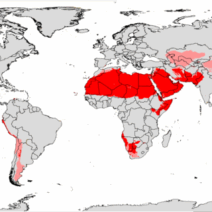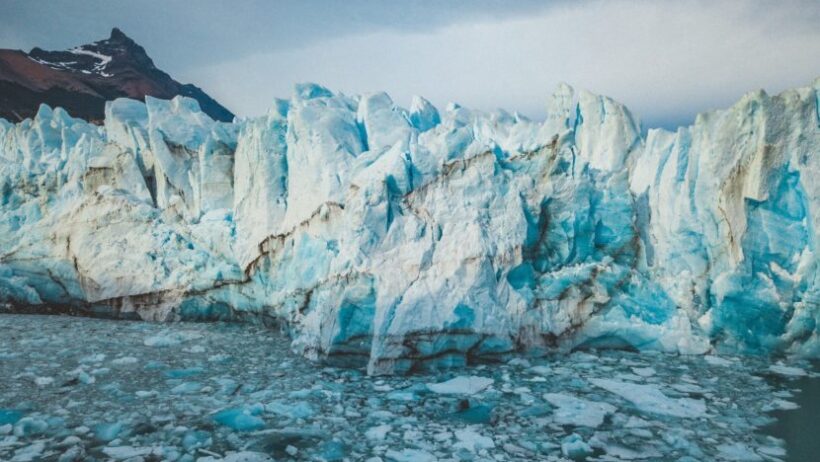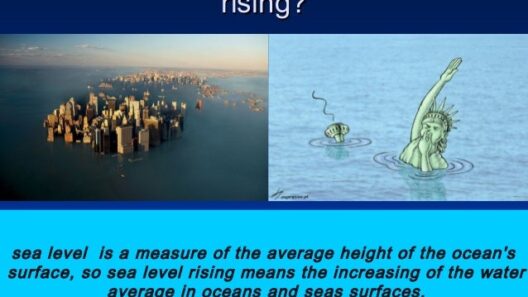Rising sea levels have become an unmistakable reality, catching the attention of scientists, policy-makers, and the general public alike. This observable phenomenon evokes a spectrum of emotions—from concern to fascination. Behind those dramatic tides lies a complex interplay of factors that merit our scrutiny, providing insights into both environmental changes and future implications for humanity.
Understanding why the sea level is rising is not merely an academic pursuit; it underscores critical dimensions of ecological stability, human habitation, and planetary health. Several interwoven causes contribute to this dilemma, and unraveling these threads can illuminate the challenges we face.
The warming climate serves as a predominant actor in the tale of rising oceans. As global temperatures increase, several processes come into play, fundamentally altering the physical state of our planet. Notably, the thermal expansion of seawater is a significant contributor. When water heats up, it expands. This phenomenon, while seemingly innocuous, results in a measurable rise in sea levels. According to scientific data, thermal expansion accounts for approximately half of the observed increase in sea level over the past century.
Additionally, the melting of polar ice is another critical factor. The polar regions, particularly Greenland and Antarctica, play a vital role in maintaining global sea levels. As the climate warms, vast ice sheets are beginning to disintegrate at an alarming rate. The meltwater from these glaciers flows into the ocean, further exacerbating the rise. For instance, satellite observations have demonstrated significant ice loss in both regions, revealing that these ice masses, once considered stable, are now in retreat, pouring additional volumes of water into the world’s oceans.
Moreover, the contributions from glaciers around the world should not be underestimated. These smaller, yet significant, ice formations serve as freshwater reservoirs. Although individually they may seem trivial, collectively their melting poses a tangible threat. The disappearance of glaciers affects regional climates and fresh water supply, ultimately infiltrating the broader ecosystem.
Heightened precipitation patterns and altered weather cycles can also be linked to climate change. Regions experiencing increased rainfall see more water flowing into oceans, which can accelerate sea level rise. These changes are not merely anecdotal; they are observed phenomena documented through years of research. Extreme weather events, including hurricanes and storm surges, create temporary fluctuations in water levels but can lead to permanent alterations in coastlines as erosion takes its toll.
As we explore the consequences of rising sea levels, it’s clear that the implications extend far beyond scenic concerns of sunken coastlines. One of the most immediate effects is the encroachment on coastal ecosystems and human settlements. Estuaries, mangroves, and wetlands are vital habitats that provide shelter to a myriad of species. As sea levels rise, salinity levels change, often rendering these ecosystems inhospitable, leading to biodiversity loss.
The socioeconomic ramifications are equally alarming. Numerous cities around the globe are situated on coastlines—areas that stand to be drastically affected by rising seas. For instance, large metropolitan areas like Miami, New Orleans, and Bangladesh face existential threats from both increased flooding and the displacement of communities. Entire populations may be forced to migrate, a phenomenon referred to as “climate refugees.” This crisis not only poses humanitarian challenges but can also lead to geopolitical tensions as nations grapple with influxes of displaced individuals.
Infrastructure is another casualty of rising sea levels. Coastal cities invest vast sums in defenses against flooding and erosion, but the question arises: how sustainable are these efforts? Engineering solutions, while vital, can only mitigate risks for so long. The cost of retrofitting existing infrastructure to withstand rising waters can be prohibitive, leading to discussions about prioritizing which areas to protect and which to abandon—a contentious societal dilemma.
Moreover, the cultural and historical loss tied to the submersion of coastal communities and landmarks cannot be overlooked. Entire histories and traditions that have flourished along shorelines risk being obliterated by encroaching oceans. This brings to light a profound existential question about our relationship with the environment; what do we stand to lose if we do not take decisive action?
The interplay between rising sea levels and climate change extends to the geopolitical sphere. Countries vulnerable to climate change can face challenges to their sovereignty as land becomes uninhabitable. Resources become strained, and markets fluctuate as agricultural patterns shift, leading to economic instability. This intricate web of impacts underscores our interconnectedness—what affects one part of the globe inevitably resonates elsewhere.
In conclusion, addressing the causes and consequences of rising sea levels necessitates a multifaceted approach. It requires cooperation among nations, a commitment to science, and an embrace of innovative thinking. Initiatives aimed at mitigating climate change, enhancing adaptive capacities, and investing in sustainable coastal practices will be crucial. The intricate relationship between human activity and nature proves to be a compelling narrative that stimulates not only fascination but urgent action. As we delve deeper into these issues, it becomes clearer that the question is not whether the oceans will rise, but rather—how will we respond?








